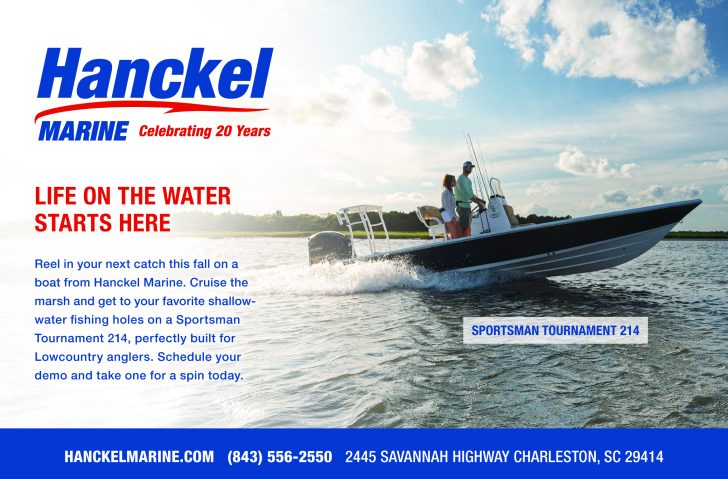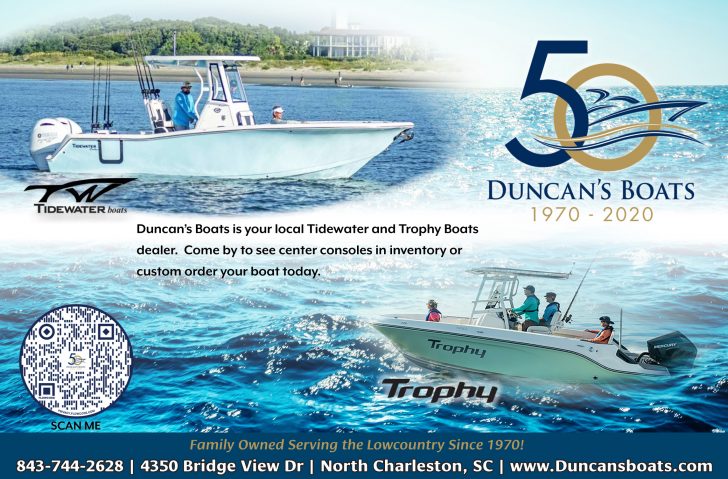Artificial Intelligence | David Fladd | September 2021
Its funny how differently species of fish are perceived, based on their abundance or food value or lack thereof. One example is Crevalle Jacks, which, because of their lack of food value and high abundance in Florida, are often considered a nuisance species.
But here in Charleston, big Crevalle Jacks have made a reappearance in the last 5 years after mysteriously disappearing from our waters for the prior 10 or 15 years.
They have become a sought-after target for recreational anglers and guides alike due to their affinity for an obnoxious presentation of a topwater plug and tackle busting strength after the hookup.
No one can deny that if you’re looking for a worthy adversary to catch and release it doesn’t come much better than a Crevalle Jack. Myself, I’m zero for five on landing to hookup ratio on them which make them even more desirable.
People want what they can’t get. In the heat of summer, there is not a lot of action inshore outside of our awesome bull redfish run in Charleston harbor.
The creeks are hot. As I write, water temps in the creeks are over 85 degrees, and have very low dissolved oxygen. Catching fish in those conditions is borderline irresponsible if you’re releasing them, as I recently discovered.
I was on a surprisingly good redfish bite upriver and had one of my tagged fish found dead the day after release. Knowing the fish were stressed, I put most of them in my aerated live well for a few minutes to recover before release, and still had this happen.
It’s impossible to know which fish didn’t make it, but it’s a reminder that catch and release is not always perfect even under the best circumstances, but especially when the water is hot. So, what’s an angler with cabin fever to do?
How about thinking outside the box and targeting another species that doesn’t get much respect and has a reputation for ruining tackle and tangling nets?
I’ve been following the Lowcountry Kayak Anglers club for several years, and they recently had an event known as the Jurassic Classic.
In this tournament, the target is Bowfin, a.k.a. Mudfish, a species that most anglers shun as a nuisance. The winner of this year’s Classic won with a 32” giant. Most anglers caught double digits of fish, and in general raved about how fun it was.
I contacted Chris Tweedy, President of the club to learn more about the event. He told me the club started targeting Bowfin while fishing an event called the Kayak Wars, a catch-photo-release online tournament that included Bowfin as one of several targeted species.
This motivated participants to seek them out. Anglers quickly discovered how much fun it was to catch them which led Chris to start an invite-only catch and release tournament in 2018. It was a huge success, so it became a club event the following year.
The event is now held annually in the first weekend of August and this year’s event attracted over 40 participants.
Bowfin is a species whose ancestors have been on earth for over 30 million years. One of the attributes they have evolved to allow them to survive is the ability to breathe air.
While most fish are at a disadvantage with low oxygen levels in the water, the Bowfin simply rises up and gulps air to survive. While bowfin can be found almost anywhere in the low country, a great place to target them is somewhat nearby at a couple Oxbow lakes near the Santee River in Jamestown.
These lakes were once bends in the Santee that were eventually closed off when the river naturally changes its course over time.
Two of these lakes, Wee Tee and Dawhoo, are publicly accessible. The lakes have very different characteristics, with Wee Tee being shallower but having a wider variety of species, and Dawhoo being deeper with better visibility water.
After seeing the results of this year’s Classic and hearing about how much fun it was, Ralph and I decided to bring his Jon-boat out there to give it a try.
We didn’t really know what to expect or how best to target them with artificial lures. Would they want a fast and aggressive presentation, or slow and subtle? What part of the water column would they prefer? Would the strike be subtle or strong?
To us, trying to figure out a new body of water and species is about as much fun as we can have. At the end of the day, the boat was littered with Z-Man Elaztech lure bodies as we switched out profiles and colors on Texas Eye jigs to see what was most effective.
The first thing you notice upon launching the boat are big splashes caused by Bowfin gulping air and returning to the bottom.
The fish are large and literally everywhere. They are not necessarily relating to structure. Some of the splashes were clearly by very large fish and honestly its very distracting!
It’s important to realize that these are not feeding fish, so it’s not productive to toss a topwater plug at the splashes and expect results, for example. However, the surface activity surely reveals their presence.
We did find a few patterns and profiles to be particularly effective and I will leave that to the reader’s imagination and personal experience. We did have results on many presentations and lures, but on this day the bite was very, very subtle.
Ralph remembered catching Bowfin when he was a child on the Pee Dee River and successfully applied that knowledge toward a couple 30” plus giants.
The funny thing about these fish is that you can use standard trout rods to catch them, but like a “green” cobia, the real fight begins as soon as you touch it with a net, lip gripper (or gaff, in the case of cobia).
Many fish are lost at this point, and a big net is a good idea. Many times we had to cut the lure off the line in order to untangle it from the webbing if that gives you an idea of how they fight.
Chris is on a mission to promote these fish, not kill them indiscriminately and hopefully try and grow out a whole new midsummer fishing experience. If you’re interested in getting a shortcut to learning these fish and how to catch them, Chris offers guided fishing trips for them.
Look him up at Topwater Kayak Charters (carolinatopwater.com) and consider participating in next year’s Jurassic Classic.
If I told you that you could catch double digits of 7 plus pound fish that put up a great fight, will hit artificial lures, and are a challenge to hook and land, would you consider it a nuisance?
I didn’t think so. If you decide to give them a try, please handle them with care and release them so this fishery remains special for future generations.
David Fladd
Partner, Eye Strike Fishing
dfladd@eyestrikefishing.com
eyestrikefishing.com
You may also enjoy reading..
Float Your Way To Fishing Success
Becoming A Puppeteer Fisherman








